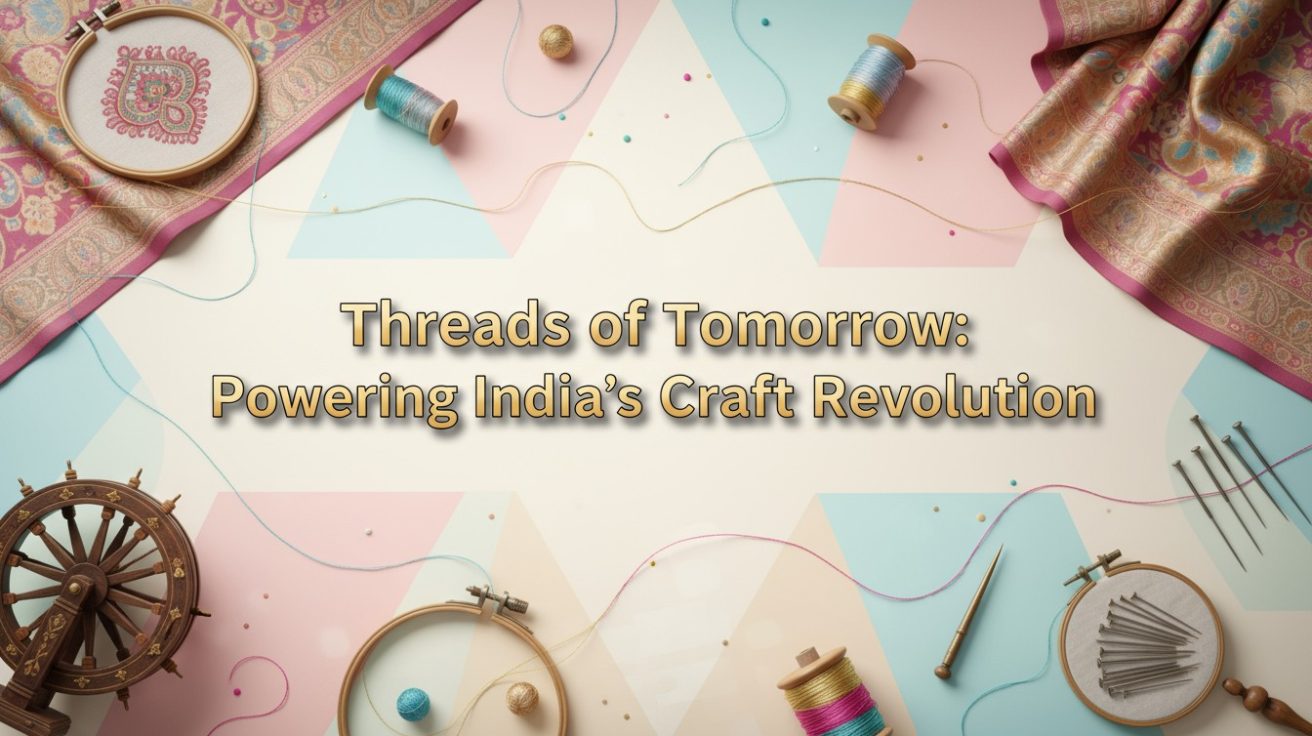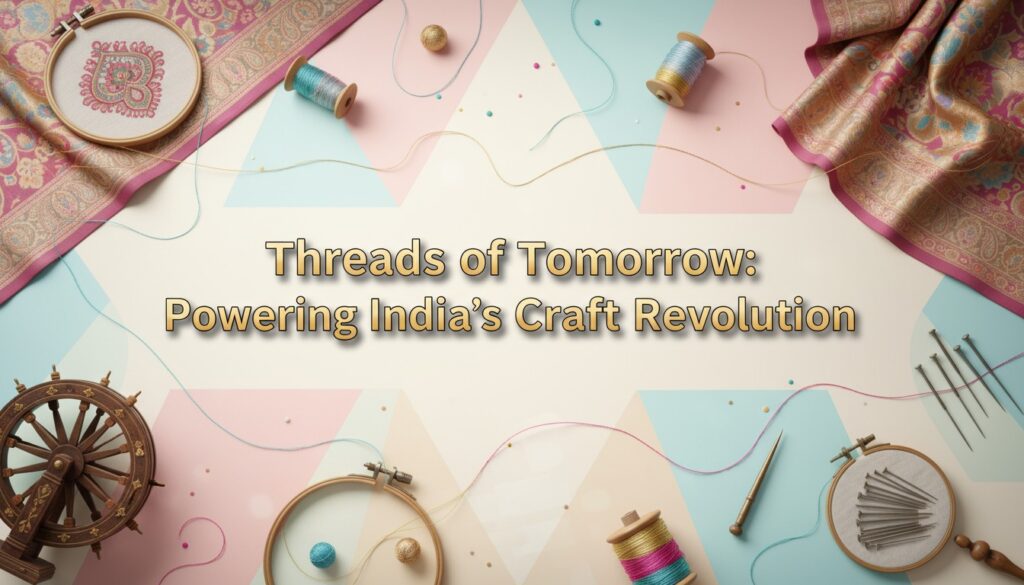
India’s crafts are not just heritage, they’re our future. As global demand rises, the question is: can India scale with quality and conscience?
India’s Textile Moment: Promise & Pressure
India’s textiles and crafts are at a turning point. Exports are up 10.03% to $15.99 billion in FY 2024–25, trade agreements are opening new doors, and international buyers are looking at India as a serious sourcing hub.
Yet beneath the shine, artisans and small businesses are wrestling with systemic hurdles. The sector must balance quality, scale, and sustainability or risk losing its unique edge.
Beyond Luxury & Mass: The Mid-Market Opportunity
India’s craft story has long been trapped between two extremes:
- Luxury heirlooms like Banarasi silks or Kanjeevarams.
- Cheap mass-market exports stripped of artistry.
This leaves out the mid-tier artisanal products affordable yet high-quality textiles that global buyers increasingly want.
But here lies the bottleneck:
- Inconsistent quality standards across clusters.
- Fragmented ecosystems lacking modern equipment and certification.
- Supply chain unpredictability with delays and opacity.
As one European buyer recently remarked, “The artistry is breathtaking, but scaling up feels like a gamble.”
Tradition Meets Technology: A Fragile Balance
Mechanisation has brought speed and consistency, but it risks flattening the very soul of Indian crafts. Handmade embroidery, block prints, and handloom weaves carry stories, textures, and “imperfections” that define authenticity.
The challenge: Can India scale responsibly, without losing character?
The answer may lie in hybrid models:
- Cooperatives pooling resources for quality control.
- Designer-led collectives blending tradition with global design sensibilities.
- Tech-enabled social enterprises improving logistics, forecasting, and market access.
Investing in skilling programmes, design innovation, and digital tools can empower artisans without erasing tradition.
The Sustainability Imperative: Beyond Greenwashing
“Eco-friendly” can’t just be a label. For Indian textiles, sustainability must mean action:
- Environmental: Cleaner dyeing technologies, water management, energy efficiency.
- Social: Fair wages, safe working conditions, gender equity.
- Cultural: Safeguarding heritage skills for future generations.
Today, many artisans live on subsistence incomes, with younger workers leaving crafts behind. Without systemic reform, India risks losing not just markets, but traditions themselves.
As sustainability expert Rina Mehta puts it:
“True circular fashion is about people as much as the planet. You can’t call it sustainable if artisans remain invisible.”
FTAs, Exports & The Global Stage
With the India-UK Free Trade Agreement set for 2026, experts project India’s exports to the UK could double within 5–6 years.
But scaling exports demands:
- Industrial infrastructure without cultural erosion.
- Transparent certifications that build global buyer trust.
- Resilient supply chains that guarantee delivery and consistency.
Handled right, India could position itself as the world’s ethical fashion hubmarrying tradition with modern business intelligence.
Building a Future-Ready Craft Ecosystem
So, what does a thriving ecosystem look like? It’s not one hero, but many working together:
- Designers → Translating craft into globally relevant products.
- Policy makers → Enabling infrastructure, credit access, and artisan welfare.
- Craft clusters → Strengthening skilling, certification, and digital adoption.
- Consumers → Valuing provenance, storytelling, and conscious choices.
- Public-private partnerships → Driving incubators, e-commerce platforms, and international visibility.
The Road Ahead: Threading Quality, Scale & Sustainability
Imagine an India where:
- Artisans earn dignified livelihoods.
- Buyers trust quality and transparency.
- Craft meets climate goals.
- Global runways proudly showcase Indian heritage.
That vision is within reach but only if stakeholders act now. The craft sector cannot rely on nostalgia; it needs systemic reform, investment, and bold collaboration.

